Liz B. sent in a screen shot and some commentary. She did such a nice job explaining that I’m just going to let her do it:
I’m an undergraduate student at a Big Ten school, and today I was perusing the course tracking website that gives students access to their grades, their homework etc. One of the features is that you can change the “theme” of the site… I came across the “physiology and anatomy” theme…
What struck me was not that they had a physiological representation of both sexes, but by how gendered their stances are. The man stands straight, looking ahead, even weight distribution. The female form is almost classically passive, hands held behind her back, weight distribution uneven.
Close up:
Liz continues:
Its striking that these notions about gendered bodies are inserted into even seemingly scientifically oriented things. Its a fair assumption that the designers for the site intended this theme for those who are participating in an anatomically related major, people who are being (or should be) trained to view the body, sans socially constructed gender norms. Yet, here, we see a prime example of gender presentation used in a scientific context… [A]re our doctors and scientists being instilled with these kinds of images throughout their academic lives? If so, its no small wonder why there are doctors and scientists who lend credibility to gender norms by operating on them as if they are nature, or why many people view gender as so fatalistically natural.
More examples:
Jennifer sent in these two anatomy illustrations from a gym. “Surprisingly,” she said:
they had one for both men and women – you would think the two would be practically identical and you could get away with a generic figure.
Then I noticed that there was a big difference in how the two sexes were presented. The male figure is standing straight up, lifting a heavy weight. We see him in a simple front, side, and back view. The female figure, however, is posed in a flirtatious manner, and we see her only from the front and back. Even when she doesn’t have skin or facial features, she’s still presenting her chest and butt and tossing her hair to the side. She’s also shown lifting what appear to be very light hand weights.
It’s a problematic message: men go to the gym to become functional and stronger, women come to the gym to become sexually attractive but not TOO strong while they’re at it.
Liz Q. sent us a link to a CBS News video on urinary tract infections (via Jezebel) that included the following anatomical illustration:
Halley M. sent in this image from the Wikipedia entry under “human” and “anatomy.” It presents also presents the female in a decorative, as opposed to illustrative, pose (after the jump because NSFW):
Science fan Ryan sent us an image of the Pioneer plaques, which she explains “were placed on two of the pioneer spacecrafts and were both inscribed with an image that was supposed to depict some basic information about humans in case the crafts were intercepted by extraterrestrials.”
Ryan points out,
Lisa Wade, PhD is an Associate Professor at Tulane University. She is the author of American Hookup, a book about college sexual culture; a textbook about gender; and a forthcoming introductory text: Terrible Magnificent Sociology. You can follow her on Twitter and Instagram.The man is standing straight up with his hand raised in greeting, as though he is the true representative of the human race while the woman stands passively by his side. I don’t know why her leg is out like that, other than perhaps to emphasize the curves of her body and thus sexualize her. The thing that amazed me most about this was that it is not just some commercial media image, but rather, something that was intended to represent the entire human race. There is a cruel irony in that I guess it does accurately represent how human society perceives women. If anyone doubts that this is sexist, just put yourself in the point of view of the hypothetical extra-terrestrial. If I were an alien and saw this and had no previous conception of human society, I would think that there were two types of the species: one larger, dominant, muscular one and one smaller, meeker, passive one.


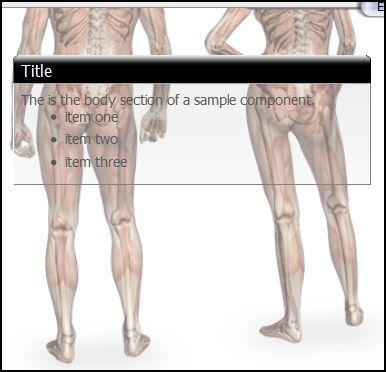
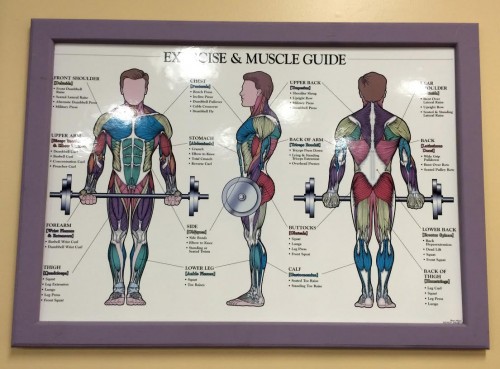
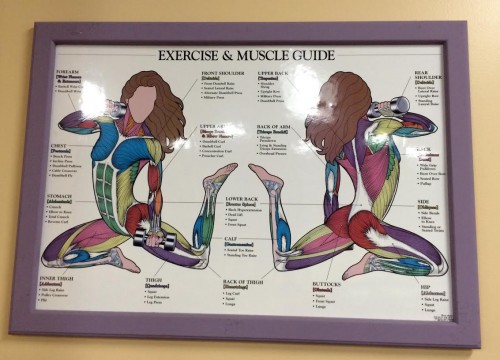
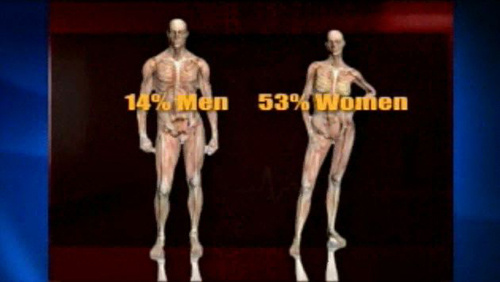
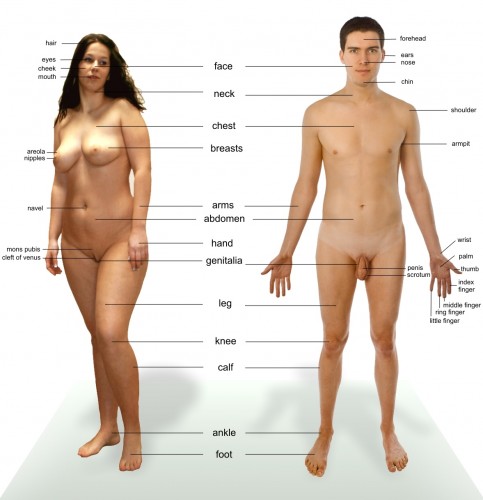
Comments 74
mj — March 14, 2010
I'm at a little bit of a loss on this one. First, her hands are pretty clearly in front of her. Second, I'm completely unaware of the fact that contrapposto is a passive stance.
Am I to understand that from now on when I see a statue or painting of someone in contrapposto it's meant to be a passive stance?
Jared — March 14, 2010
I have to admit that I'm a little sick of the demonizing of science on this site and others like it.
REAvery — March 14, 2010
Yeah...sorry, her hands are in front of her.
On the other hand, it really annoys me that she has her hip thrown out. As though the audience is supposed to find a skinless human sexy somehow. (Or maybe they couldn't bear the thought of people finding the male and female bodies to be...SIMILAR!) I do agree that this is unnecessary "gendering."
Leslee Beldotti — March 14, 2010
It's difficult to determine the position of the female model's hands in the picture, and I have no idea what 'contrapposto' is, but why not have the female model standing with her hands at her sides and her weight evenly distributed and have the MALE model standing in contrapposto?
Furthermore, if you're "sick of the demonizing of science on this site..." why are you continuing to read it?
Joel Bass — March 14, 2010
Hmm. Why do you assume that one of the figures is a male?
mj — March 14, 2010
I guess what I have trouble understanding is the claim that contrapposto is supposed to be passive.
I have no idea why the male figure has his hips only slightly off center while the female's alignment between hips and shoulders is more skewed. All I know is that illustrators don't typically draw people standing straight as a rifle because it's boring.
Maybe I'm missing something here, but it doesn't seem to me that contrapposto in and of itself is passive or demeaning or "sexy".
Anonnymouse — March 14, 2010
Does the box of text over the images say "The is the body"? Whuh?
Ketchup — March 14, 2010
Gwenyth 3:10 pm on March 14, 2010
Ketchup, you have managed to state the point exactly, while missing it entirely.
As to the notion of this pose on a man -not- being sexualizing, and the difficulty being more in the societal ideas about the positions of women, the thing is, men aren’t portrayed in this position.
=========
Because men don't stand like this! Why should they be portrayed this way? Unless a man has a deformed idea of masculinity, he is not going to act in a profoundly effeminate way and stand in exaggerated, sexualized, feminine poses.
@Gwyneth:
It’s deeply coded as feminine.
========
Because it partly is an expression of femininity.
@Gwyneth:
Stand in this pose for a moment. Or better, find a guy to stand in it. The hand positioning is demure, and includes the ‘female touching her own form’ trope, the torso angle is -not- one of basic comfort. It is a specifically sexualized posture, one that invoke defenselessness and invitation, and one coded as particularly female.
==========
I agree that it's sexualized but I don't see anything defenseless about it. She's sticking out her chest--there's nothing defensive about that. And it invokes provocation or maybe exhibitionism (not of nakedness), but invitation? Maybe, but invitation doesn't jump out to me.
@Gwyneth: One doesn’t see men, in media, in this pose. Do some research on how media represents men and women.
=======
I don't really get your point. Why should we see men in the media this way if they don't stand like this in real life?
Asa — March 14, 2010
The matters discussed in this post can also extend to artistic instruction on figure drawing, especially since in artistic circles the (sexist) greats such as Andrew Loomis - who emphasised that it didn't matter whether the woman in question being drawn was attractive or not, you should damn well try and make her look attractive on the paper - are still continuously referenced today. Granted, the basics taught are good, but the sexism remains. Contraposto is emphasised because it does create a certain rhythm and energy in the body but I do agree it is overly sexualised and definitely has traditionally "passive & sexually available" connotations, especially when taken by women. Women are also still used more often as models in figure drawing classes, with excuses such as the female figure being harder to draw due to fat deposits covering the underlying structure being used (which is utter bollocks). There's also a overriding emphasis on monotonous heteronormativity, which almost seems ludicrous when many of the greats also referenced, studied and enjoyed when studying the figure and art in general were homosexual (eg - JC Leyendecker, John Singer Sargent, etc).
However, that said in this post I think the feminine figure's hands are in front of it, not behind. The curved shapes near the hands are actually the top of the hips, an unfortunate side-effect of bad art where one object lines up with another (like a tree coming out of someone's head in a bad photo). If someone wanted they could argue therefore that the feminine figure's stance could be more assertive, since it could be clenching them in a way we can't see in front of it. However, I do agree that the emphasised contraposto stance is designed to accentuate the idealised curves of the human figure, though some small asymmetry is the natural stance of most human bodies (as you can see in the more masculine figure). The combination of the hands in front and bent and the contraposto make this figure seem comical from a figure drawing sense.
It could be interesting though to discuss in regards to such things as to why the depictions of figures in such material are always so "standard", with idealised shapes and sizes rather than bodies which reflect the majority of people medical professionals actually treat - older people with worn bone structures are non-idealised fat and muscle deposits. Or just show bodies which don't fit the mainstream false standarisation & idealised structures to try and break down concepts that such bodies are "unacceptable" to be depicted in visual media without condemnation or ridicule - fat people, people with bone structure problems, people without the idealised number of limbs, etc etc. Why is it not okay to show them in such perceived "neutral" material? Nevermind the stances, why these bodies in the first place?
bellacoker — March 14, 2010
It seems to me that another point which needs to be made about the female drawing is, unlike the male depicted, it is terrible as an anatomic drawing. The structure of her hands and her pelvis overlap, so the anatomy of one must obscured. If the artist was creating something for a mass market, he was probably censoring his work, that's interesting to me.
“Gender Advertisements” in the Korean Context: Part 1 « The Grand Narrative — March 14, 2010
[...] If you’ve enjoyed this post, then you may also be interested in this one at Sociological Images that describes how even the “physiology and anatomy” theme of a [...]
siveambrai — March 15, 2010
I attend the same Big 10 university and actually use the system shown here. As to the comments on the quality of the drawing please keep in mind that these images are all of about an inch high. I would expect the quality of them to be significantly reduced in order to fit the webpage's theme.
As to the point of the original post yes these are gendered figures that are clearly meant to be making a point. Even though they have become "standard" poses today you can't say that it doesn't have a historical and sexist background within the field. Anatomy's history as a field of study is incredibly sexist and even if a lot of that has been removed from the education today it still shades how things are perceived and the types of messages that they are sending. If you need a little reading may I suggest Londa Schiebinger's book Nature's Body or The Mind Has No Sex? Both books look at the development of early science including anatomy and how Victorian views and gender and race shaped the development and base of science as we know it. This doesn't mean I'm hating on science but it does mean we need to approach assumptions or classical bases critically.
I have to say I'm quite pleased to see an undergraduate from my university approaching this issue with a critical eye. Although we have a strong STS and Women Studies program we've lost quite a few faculty that really challenge our students to think critically. When is it wrong for someone to actually ask a question, how else are they supposed to learn?
Aion — March 15, 2010
"And as for the woman’s pose, it’s definitely feminine, but, then again, she is not a toad, she is a woman! You observe a group of women standing for awhile in a leisure situation, and you’ll see at least some women shift into such a position, it’s so normal."
I've always said that I've noticed that on subway trains men have their legs open while women sit legs pressed together covering their stomachs. I've chucked this up to 1. The fact that women are trained to be insecure about their midsections and 2. That we're offensive when we take up more physical space.
We also see a glimpse of the female's breast as an indicator of which figure is meant to be male and which is undoubtedly female. ::bachelors in Art History if that makes a difference::.
Sully — March 16, 2010
i'm suddenly reminded of something my college drawing professor told me... that the contrapposto stance was a very immature pose, common for teenagers and children.
Thinking gender « Pondering Postfeminism — March 17, 2010
[...] By doctorpen Over at one of my favourite blogs, Sociological Images, there’s a recent post that demonstrates the way our bodies, our anatomy become gendered. It [...]
S — March 17, 2010
Neither figure is standing in the "standard anatomical position" as typically used in a human anatomy course.
http://en.wikipedia.org/wiki/Anatomical_terms_of_location#Standard_anatomical_position
Ketchup — March 18, 2010
@ Ketchup.
“However, if women open up, they end up automatically copying men, and body language for masculinity, so you run into other issues there which are not being offensive because of taking up more space, but because of imitating men and masculinity.”
@Aion
How is this in opposition to what I said above? Imitating masculinity in body language IS about partially taking up more space (legs open, arms sprawled, etc.,) to emphasize physical domination, no?
==========
Not sure, maybe. Think of kids, they sprawl out all the time, and they do not dominate women. Think of very low class versus very upper class. Taking up space in body language does not determine how much power one will have in society, and does not necessarily reflect how much power one has. It certainly seems that our rules for gendered body language developed in part as a reflection from very steeply patriarchal systems though, but since that's not the only influence on the block, there's more to examine.
I don't think the most colossal majority of people care less how much physical space a woman takes up. It's any gender-crossing behavior that raises immediate red flags. Isn't any different than if a man imitates a woman's body language.
Personally, I find the prescribed sitting body language for women too constrained. But there are immediate negative reactions or negative stereotyping if you don't act this way.
Then there is also the fact that if I am in an environment where everyone is slouching etc, all I can think of is, "can't these people just sit nicely, bunch of slobs," and if I am in an environment where everyone is all perfect, according to the rules, all I can think of is, "can't these people just relax a bit, I feel like like I am in a straight jacket."
TD — March 18, 2010
If the woman figure were illustrated standing erect with feet close together and arms crossed or hand clasped in front in the model '50s prim and proper posture and the man figure were illustrated in an action movement (i.e. walking, running, jumping...) then the above rhetoric would have been caught in my mental filter of "ideas with substance". As it is I see the discussion surrounding these figures as much ado about nothing. Apparently Liz's filter is more akin to fine silk, than my homespun cotton. We each have our own level of sensitivity to key issues, that much is true at least.
It's too bad these depictions lack skin. A discussion on racial implications and stereotypes subliminally indoctrinating the medically inclined student would be much more substantive, from my perspective.
Ketchup — March 19, 2010
Ketchup 5:29 pm on March 18, 2010 | # | Reply
I’m not sure what you’re getting at with “class”, please specify. I never see women with dresses or otherwise sitting practically spread eagle the way men in sweatpants do REGARDLESS of class.
=========
Perhaps it’s because you haven’t traveled much. Plenty of poor women will sit with knees or feet much wider apart than upper class women, who would never do that while wearing a long skirt (or any skirt). Poor women may, for example, spit and do a bunch of things differently.
Aion 7:54 pm on March 18, 2010 | # | Reply
If we are talking about AMERICAN poor women there is no mass consciousness or culture where women sit with their legs sprawled open.
=============
Let's clarify some things here, there are different ways to sit which are not "legs sprawled open" and you are still not sitting with your knees together. It seems you were thinking there is only two extreme ways women sit, either "completely sprawled open" or "knees and feet touching." Reality encompasses many more combinations in between.
When I said "much wider," I was thinking of feet together and knees apart, or with the feet also apart. How apart? I would say at least a foot or a 1 1/2feet for it to be plainly visible. The leg stance is visibly different and it takes up more space than if the woman were sitting with both knees and feet together.
" If we are talking about AMERICAN poor women there is no mass consciousness or culture where women sit with their legs sprawled open."
I wasn't only thinking about American poor women, for one. Secondly, when I said "plenty," I meant more than 2 or 3, but no mass culture. Enough for me to have seen it multiple times (in real life ) and to remember it clearly. Even if these women are not the majority everywhere, they exist and you do not see this same frequency and minority of examples in upper class women from the same country or ethnicity.
"so forth it STILL doesn’t mean that a conclusion cannot be drawn from basic standards of socialization since such instances are in the minority. "
Different classes socialize people differently in a million ways, from speech, to dress, to posture, to mannerisms, to politeness rules, etc. So a conclusion can certainly be drawn that it also impacts not only how people are taught to sit, but also, in this case, how people react to a woman once she sits taking up more space.
"Please construct a better argument other than stereotypes and ridiculous assumptions."
Observing that people are socialized differently because they grow up or live in different class environments is far from a ridiculous assumption or stereotype.
@aion:"I never see women with dresses or otherwise sitting practically spread eagle the way men in sweatpants do REGARDLESS of class.
=========
@Ketchup: Perhaps it’s because you haven’t traveled much. "
@aion: Actually, I HAVE. And I resent such a comment. I’ve also grown up around poor women AND wealthy women. I’ve lived in various cities and have traveled to various areas. I’ve lived in Flatbush Brooklyn, the poor south, around the wealthiest people in Rochester, NY and lived in the middle East.
Yet unless you had traveled exactly where I had traveled, or all over the world and seen everyone living in it, you can't rule out that what I have seen is different than what you have seen.
Aion — March 19, 2010
"Different classes socialize people differently in a million ways, from speech, to dress, to posture, to mannerisms, to politeness rules, etc. So a conclusion can certainly be drawn that it also impacts not only how people are taught to sit, but also, in this case, how people react to a woman once she sits taking up more space."
This does not mean we cannot draw patterns from how women may or may not be socialized to sit. I know for a fact that women are socialized to take up less space, to be less vocal, to not demand as much, and so forth. You couldn't provide an example of the reverse (low class women VS upper class women in my opinion was reaching for straws since you could not provide an example of men on average sitting legs closed, women sitting legs open as an integral part of their social values).
I also used black women as an example above of what I could have mentioned in a previous analysis, knowing my theory was "up in the air". We are not as safe as white women when they flirt, look approachable, and so forth because there's no male protection/police protection and on average no one to defend them/us. However, black women are socialized to be women and therefore taught to conform/accept the same customs despite lack of privilege as other women. Black women ALSO do not sexually and verbally harass men, proving that gender and taking up space DOES exist. "Mainstream culture" holds more weight than ethnic culture, in fact, racial culture does not exist. Even so, black women look unapproachable out of fear BECAUSE we are women and are targets of sexual harassment BECAUSE we are women.
I say all this to say that my argument was/is about noticing patterns, like my analogy about height and attractiveness. If I were to say that many men sought out blonds based on stereotypes of femininity, it doesn't mean that there aren't men throughout the world who are married to non-blond women. It means that pop-culture holds blonds up as ideal, and despite "culture" poor, jewish, black, etc., men will often desire blonds as a preference (a whole different bag of worms) because of mainstream culture. NOT ALL, but a higher percentage. Attraction is socially constructed, as are things such as how we react around strangers, what we wear, and the values we hold.
Again, just pointing out patterns which I said quite clearly are PARTIALLY (not in whole) due to womens socialization of how it's appropriate to act in public places. As said, there's men who wear skirts and makeup throughout the world, but if I were on the subway I'd notice that a lot of women (including myself) wear makeup and the men don't. I can draw conclusions as to why women on the subway would wear makeup whereas the men around them don't, based on power and that society values women based on physical attraction more than men. What you essentially did was come along and say "well that's not true! It has nothing to do with gender because :::distant tribe here:::: have men who wear makeup! Clearly you haven't traveled to ____" It's a really unproductive and childish way to argue and prove a point. I come to contexts for insight on how socialization has impacted everything about our lives. Not to get into the "well, you haven't met EVERY person from ::said group:: you're not allowed to draw conclusions on how socialization has affected them..."
With that being said, this is sort of turning into a "tit for tat" conversation. I'm sorry to beat you over the head with so many different analogies, but that's the only way I could think of to explain myself and how I generally draw patterns. Let's just leave it at you're entitled to your opinion, and I to mine. :-)
Zula — April 1, 2010
Also note which part of which body is labeled in the Wikipedia photograph. The navel and the nipples - two things sexualized on women more than men - are labeled on the woman, where as the man's body is used for more generic body parts - the wrist, for instance.
Electrickoolaid — April 1, 2010
For the record, while the anatomy on the Pioneer plaques is sexist, I don't think it's consciously sexist. The plague was designed by Carl Sagan who was very big into gender equality, so I highly doubt that he actively intended to portray women as more meek and passive. It was a dumb thing to overlook on his part (and the part of whoever approved it before it went to space), seeing as the purpose was to represent the entire human race, but I don't think there was any conscious intent to be sexist there. Not justifying it, just defending Carl.
CrabOfDoom — July 7, 2010
In the image with the actual photographs, is there a particular reason why the captioner could write 'penis' and 'scrotum', but couldn't bring themselves to write 'vulva'? (the vagina isn't actually visible from that position, so it gets a pass.) "Cleft of Venus"... I almost want to believe they made that up, just to avoid acknowledging that science gave vulvas a name. Or maybe they really didn't know it had another name, which for such a clinical-like illustration is really funny in a sad kind of way. Score one for researching your project.
Also interesting that the hair, eyes and mouth labels are given to the woman. She also gets the only indications for breasts, nipples and areolas, while there's plenty of open room to move those labels to the middle and extend the lines to the man, as well.
Prima — March 13, 2012
Very interesting piece of writing.
Yuliya — March 25, 2012
http://en.wikipedia.org/wiki/Human_anatomy
They changed the wikipedia illustration to show both man and woman facing forward! That's pretty cool.